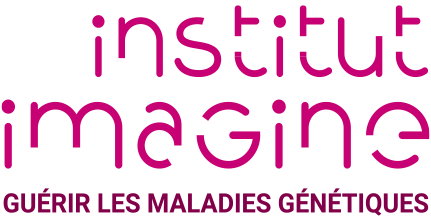Published on 30.11.2022
Sickle cell disease and beta thalassemia are genetic diseases called beta hemoglobinopathies. They are caused by mutations on chromosome 11 of the gene responsible for the production of beta globin, a protein that makes up hemoglobin, the main component of red blood cells.
In sickle cell disease, the structure of beta globin is altered, affecting the integrity of the red blood cells and leading to anemia, very painful local obstructions of the bloodstream (or vaso-occlusive crises) and progressive organ damage. In beta-thalassemia, the production of beta globin is drastically reduced, causing a hemoglobin deficiency and leading to severe anemias.
In the 1970s, researchers observed that rare individuals carrying the specific mutations for each of these diseases did not develop the disease. What did they have in common? They all carried compensatory mutations in another gene on chromosome 11 that stimulated the production of fetal globin (or gamma globin). This protein, which normally ceases to be produced at the end of fetal life, is able to replace the defective adult beta globin to form healthy hemoglobin, thus ensuring the production of sufficient fully functional red blood cells.
A research team led by Annarita Miccio, an Inserm researcher at the Imagine Institute (Inserm/Université Paris Cité/AP-HP) conducted a series of in vitro experiments to determine the most effective strategy for stimulating fetal globin production by replicating these beneficial mutations through gene therapy for therapeutic purposes [1]. The most effective approach was to insert a genetic mutation that generates a molecular mechanism in red blood cells that has the dual advantage of stimulating fetal globin production and blocking the mechanism that naturally inhibits it.
In addition, the researchers have shown in animals that this strategy is effective over the long term, which is a very important result in the context of a therapeutic application.
Many steps are still needed before this new gene therapy approach can be applied in the clinic," says Panagiotis Antoniou, first author of the study, "for example, we need to optimize the protocol to genetically modify more red blood cells, as only 60% are modified with the current protocol. However, our work paves the way for the clinical development of an innovative and safe treatment for patients with beta hemoglobinopathies, with the aim of improving their quality of life," concludes the researcher.
|
Sickle cell disease, which affects 5 million people worldwide, is the first genetic disease in the world and the most frequent in France. Each year, approximately 100,000 children worldwide are born with a severe form of beta-thalassemia. In order to continue to support research advances in the fight against rare diseases, the 2022 edition of the Telethon will be held on Friday, December 2 and Saturday, December 3, during 30 hours of airtime on France Télévisions. |
Sources:
[1] Nature Communications: https://doi.org/10.1038/s41467-022-34493-1
Contact researcher
Annarita Miccio
Inserm researcher, Director of the Chromatin and gene regulation during development team Inserm Unit 1163 Institut Imagine annarita.miccio@institutimagine.org
Press contact
presse@inserm.fr
